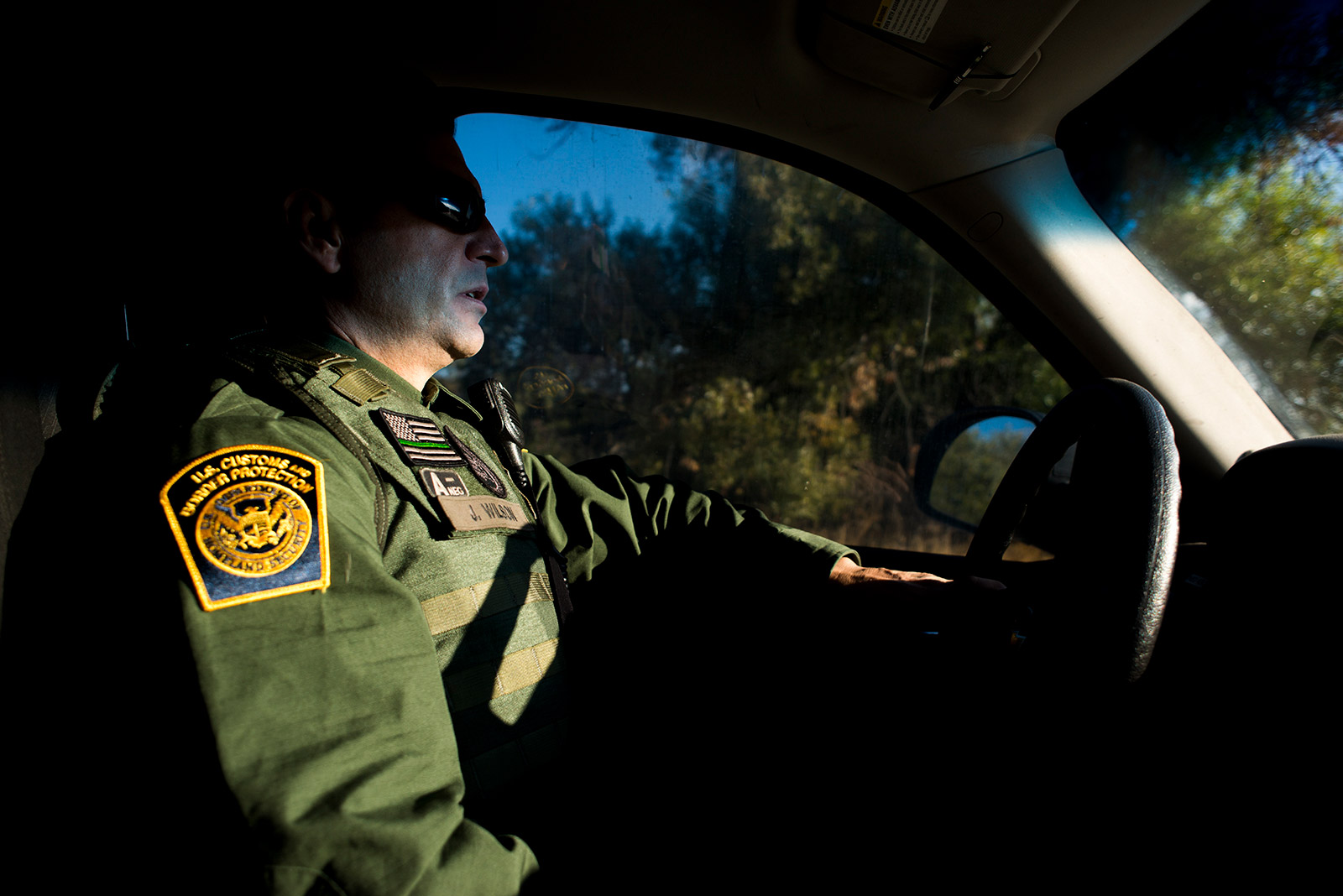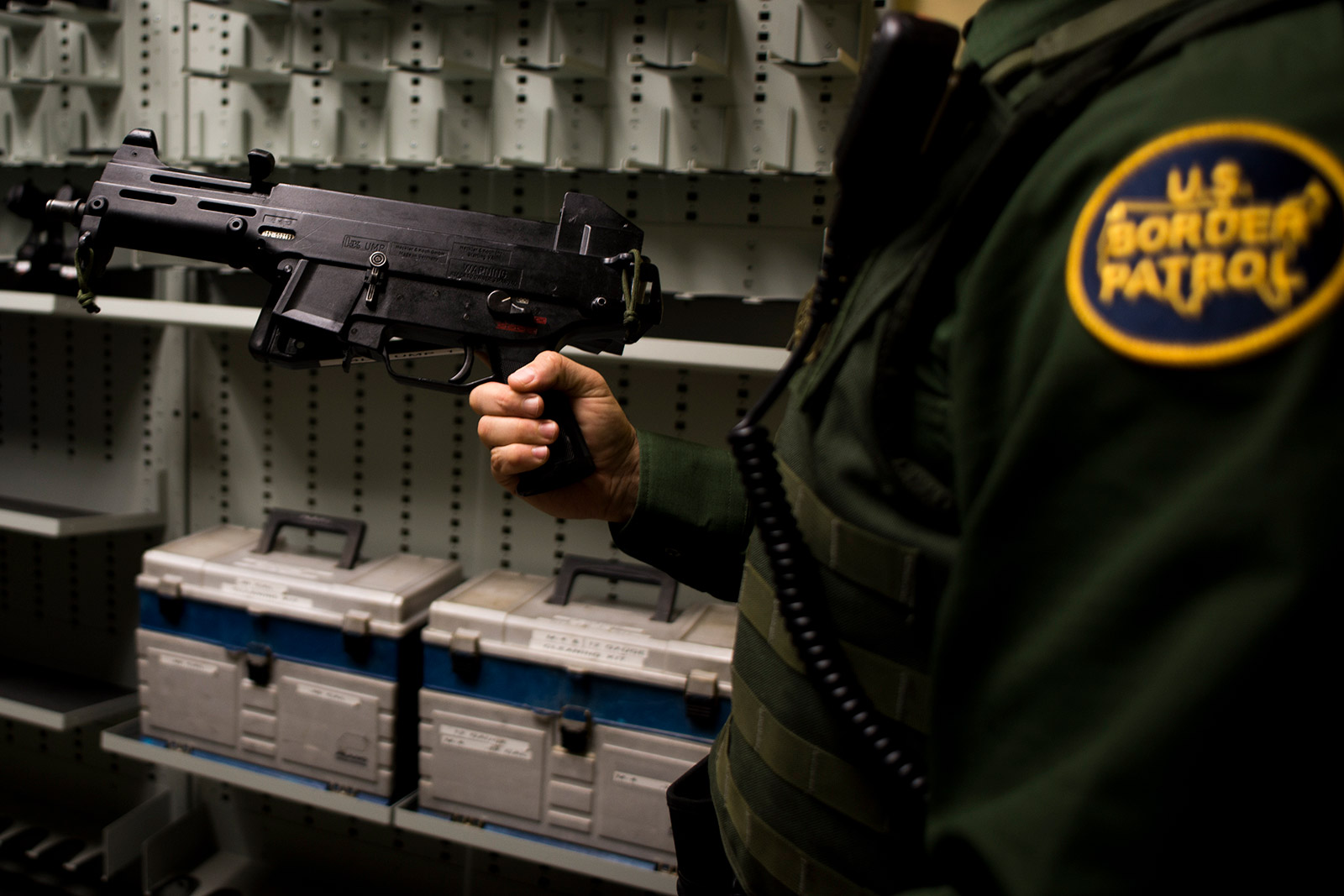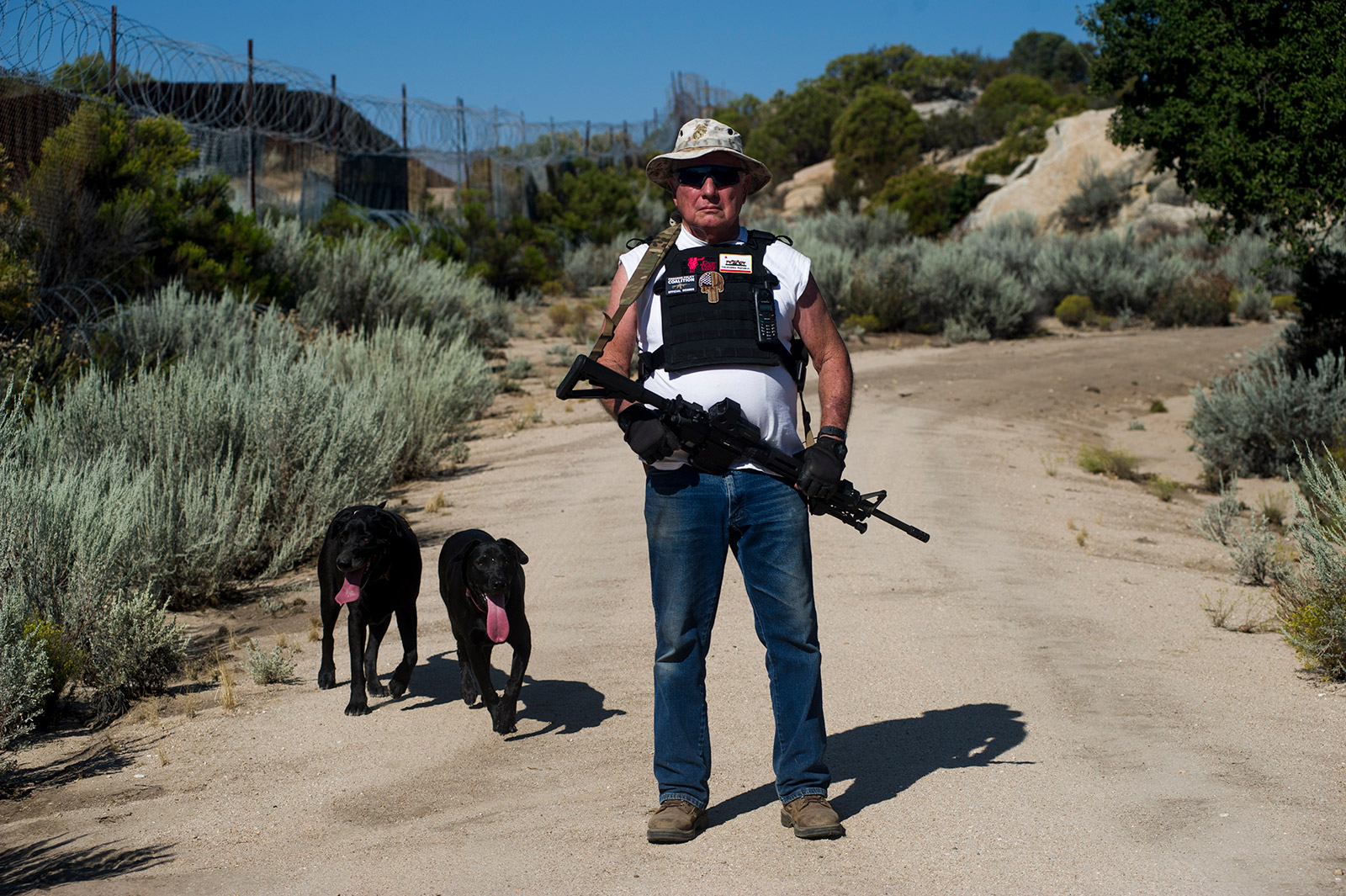(Brandon Quester/inewsource)
Border Patrol officer describes the dangers faced along the U.S.-Mexico border
By Jean Guerrero | KPBS
November 13, 2017
About ‘America’s Wall’
KPBS and inewsource partnered for this in-depth reporting project we’re calling “America’s Wall.” We were motivated by President Donald Trump’s call to spend billions of dollars to build a longer, more fortified wall along the U.S.-Mexico border.
We wanted to know what that new and improved wall might mean for the people on both sides of the border, and we looked to facts from the past to tell the story.
Using previously undisclosed data from the federal government, we created an interactive map that shows every mile of the current wall along with when it was constructed. We layered that information with illegal immigration patterns and enforcement over the decades.
To read more about this collaboration, click here.
Joshua Wilson squinted in the sunlight as he walked along the ocean in Imperial Beach, a few feet north of the U.S.-Mexico border.
“I got to tell you, there are worse places to be stationed than San Diego,” said the 44-year-old Border Patrol agent.
Here, the western edge of the U.S.-Mexico border fence cuts across the sand into the Pacific Ocean.
As vice president of the San Diego chapter of the National Border Patrol Council, Wilson led journalists on a tour of the border fence. He wore his dark hair parted sideways, a Fitbit on his left wrist and a green bulletproof vest.
He showed reporters various types of barriers: steel mesh fencing just north of the beach, corrugated steel barriers farther inland and secondary fencing that runs parallel to those.
“Before the fencing, this was a no man’s land,” Wilson explained. “We were literally playing tag and hide-and-seek out here.”
Through the 1980s and mid-1990s, before the fencing was built, San Diego was the most popular illegal entry point on the Southwest border, accounting for nearly half of all apprehensions.
Wilson was not a Border Patrol agent then. He joined in 2005. But the stories of migrants crossing en masse are legendary among older agents.
“No barrier is a be-all, end-all that’s going to prevent all illegal activity,” Wilson said. “It acts as a speed bump. It basically provides us with more time and the ability to deal with the threat.”
Joshua Wilson, vice president of the San Diego Border Patrol union, shows on Sept. 5, 2017, the types of weapons available to field agents for patrolling the U.S.-Mexico border. (Brandon Quester/inewsource)
From southwestern San Diego, Wilson drove reporters east in an unmarked Border Patrol vehicle to Boulevard. The 40-minute drive is his daily commute. A winding dirt road led the group to a tall steel fence cutting across the desert and glowing red under the sun. A sign on the fence read, in English and Spanish:
“Warning: International Border. It is unlawful for any person to cross the international border at any place other than a port of entry. The nearest ports of entry are Tecate and Calexico, California.”
This stretch of fence was built in response to barriers in San Diego causing migration patterns to shift to this desert area. Wilson explained the fence’s slanting steel columns protect agents from smugglers who throw rocks and other objects at them. At the same time, he said, they allow agents to see through and identify approaching threats.
“The fencing is an enhancement to agent safety,” he said.
Wilson supports President Donald Trump’s plans to expand the current 653-mile wall. He said every layer of added security makes it easier and safer for Border Patrol agents to do their jobs.
The Agent
Joshua Wilson, a Border Patrol agent and vice president of the San Diego chapter of the National Border Patrol Council, said newer parts of the wall help keep him safer and makes his job more efficient.
He added that this fence could use a secondary barrier running parallel to it, like the one built closer to the Pacific Ocean. He said the layers would give agents more time to react to incursions. Stadium lighting for nighttime patrols would also help, Wilson said.
“There are days where you are absolutely terrified, and then there are days where you’re trying to fight the boredom and get through the shift,” he said. “Unfortunately, I think we live in an age where it’s a little bit popular and trendy to demonize police and people who are in law enforcement. And I don’t think people truly understand the threats we face.”
Just east of here, in July 2007, two years after Wilson had joined the Border Patrol, his friend and fellow agent, Eric Cabral, died of a heart attack tied to heat exhaustion while tracking a group of migrants who had entered the country illegally.
Wilson recalled hearing through his radio receiver that his friend was in trouble. He tried to communicate with a helicopter to secure a landing zone. When the helicopter landed closer to his friend, Wilson sped to the scene. Cabral was still alive when Wilson arrived. But by the time the helicopter landed at the hospital, Cabral was dead.
“It was devastating,” Wilson said. “It certainly reinforced the dangers of the desert. He was in outstanding physical shape. He had a master’s degree in exercise kinesiology. Our instructors used to get mad at him because he was smiling even when they were beating us into the ground.”
Another Border Patrol agent in San Diego, Robert Rosas, was shot dead in July 2009 by a smuggler who wanted his night vision goggles.
Although these incidents are hard to forget, Wilson enjoys his job. He said that ever since he was a boy growing up in Azusa in the San Gabriel Valley, he wanted to be in law enforcement. He enlisted in the Army after studying criminal justice in college. In 2005, he joined the Border Patrol. Wilson loves the outdoors and exercising and thought Border Patrol was the best place to pursue his dream of protecting the community while working in nature.
Wilson said the best days for him are when he arrests someone crossing the border illegally and finds out, while processing them, that the person was “a really bad guy.”
“We don’t have fences or borders because we dislike the people on the other side of it. We have fences and borders because we love the people that are on this side of it,” he said.









